Dressing The Part

- Oops!Something went wrong.Please try again later.
- Oops!Something went wrong.Please try again later.
- Oops!Something went wrong.Please try again later.
- Oops!Something went wrong.Please try again later.
- Oops!Something went wrong.Please try again later.
- Oops!Something went wrong.Please try again later.
- Oops!Something went wrong.Please try again later.
- Oops!Something went wrong.Please try again later.
- Oops!Something went wrong.Please try again later.
- Oops!Something went wrong.Please try again later.
Dressing The Part
Six celebrated costume designers weave their unique brand of enchantment into some of the year’s most fashion-forward films.
Artwork by François Berthoud
By Ingrid Schmidt
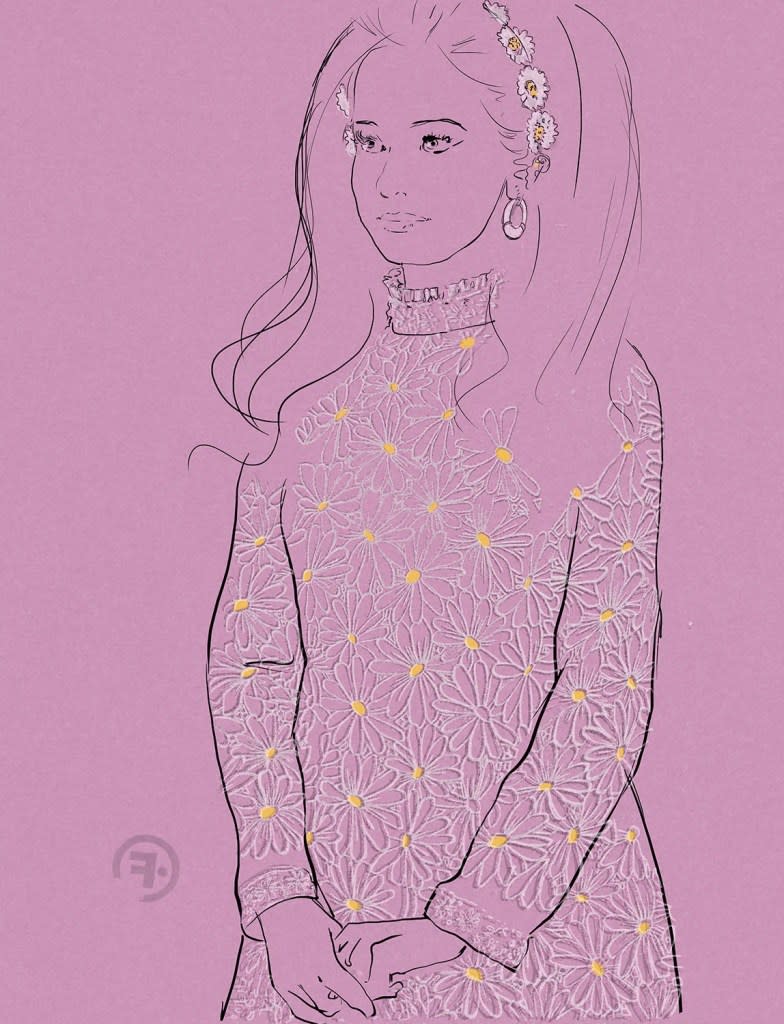
Priscilla
What a banner year 2023 was for wardrobe at the box office. The simultaneous release of Christopher Nolan’s historical drama Oppenheimer and Greta Gerwig’s fantasy adventure Barbie spawned a viral “Barbenheimer” as fans hit theaters wearing disparate looks inspired by tweedy physicist J. Robert Oppenheimer (Cillian Murphy) and the iconic doll (Margot Robbie). Other sartorial standouts include Joaquin Phoenix in Ridley Scott’s Napoleon, Cailee Spaeny as Priscilla Beaulieu Presley in Sofia Coppola’s biographical drama Priscilla, Emma Stone as woman-child hybrid Bella Baxter in Yorgos Lanthimos’ mad comedy Poor Things and the oil-rich Native American Osage women in Martin Scorsese’s Killers of the Flower Moon.
Robbie’s meticulously assembled Barbie looks contrast with Stone’s jumbled Victorian-influenced outfits in Poor Things, yet both dress codes underline independence and fuel fashion fantasies. “Barbies dress for the occasion and for themselves and their friends and because dressing up is creative and fun, not because they are trying to fulfill someone else’s idea of what they should look like,” says Oscar-winning British costume designer Jacqueline Durran, adding that a strict palette of colors in micro combinations was her secret to creating impact within Technicolor Barbie Land. Durran pulled archival Chanel pieces to supplement Robbie’s wardrobe, including skirt suits and jewelry from Karl Lagerfeld’s spring 1995 collection, and the French fashion house specially designed a ski suit for Ryan Gosling’s Ken.
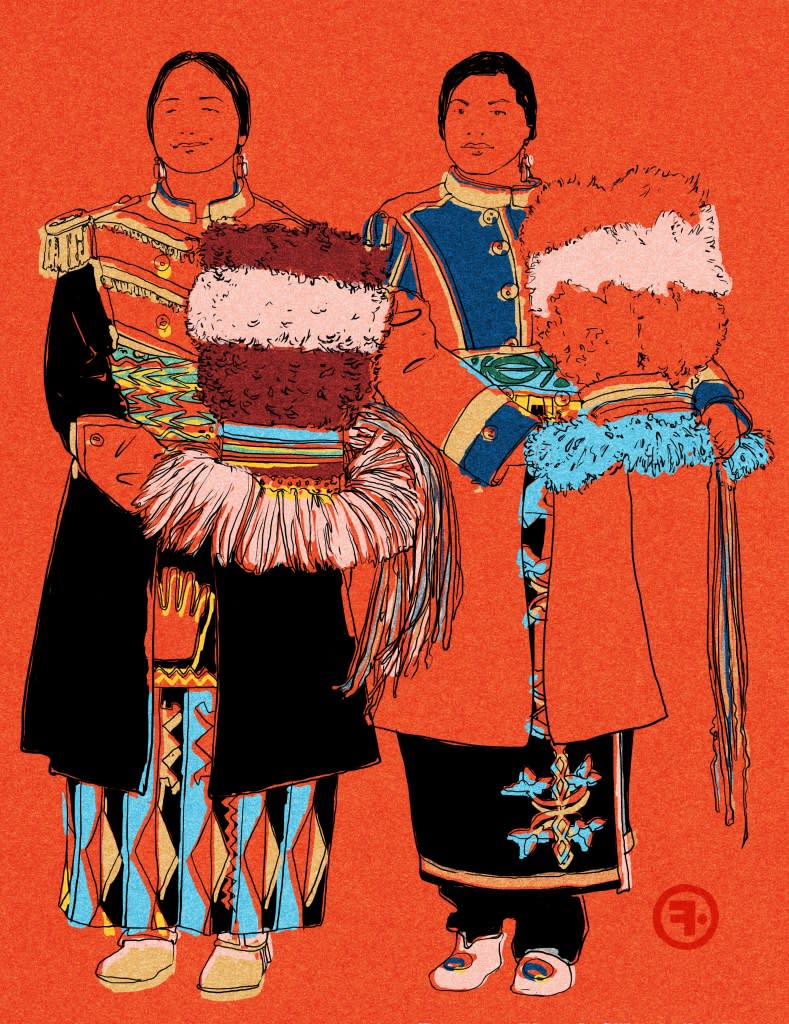
Killers of the Flower Moon
While Alasdair Gray’s novel Poor Things was set in the 1880s, British costume designer Holly Waddington chose 1890s leg-of-mutton sleeves as Baxter’s signature style. “They were like massive balloons that were empowering, so they fit with the story that she takes a huge amount of space wearing these sleeves,” says Waddington. “Transposed with highly textured fabrics that evoke the feeling of living, breathing organisms, they push forward the idea of her being quite creature-like.” Discordant dressing captures Baxter’s childlike instincts “to never follow sartorial rules and disassemble because children seem to quite like being nude,” says Waddington, pointing to underpinnings (bustles, petticoats, chemisettes) worn outright as apparel. Surprisingly, she reveals that Mark Ruffalo’s Duncan Wedderburn—not Baxter—wears a corset, along with padding on his chest and rear, to mimic an “exaggerated, pompous posture with the puffed-out chest and slightly upended bottom inspired by satirical cartoons of men in 1890s newspapers.”
Baxter’s look evolves from innocence to assuredness, as does Spaeny’s midcentury wardrobe as she progresses from age 14 to 27 in Priscilla. Costume designer Stacey Battat utilizes crinolines to create “a fuller, more childlike silhouette” on Spaeny’s petite frame. The silhouette shifts to slim skirts, while flats advance to heels and dusty pastels morph into brights as the film progresses. Battat calls out the Immaculate Conception High School uniform in “an otherworldly color” of seafoam green, based on an original sent from Memphis, as a favorite design. In the mix are Anna Sui dresses, E.las sweaters by Colin McNair and a wedding dress designed by Chanel’s creative director Virginie Viard, inspired by a swatch of archival lace.
Statement hats are a pivotal piece for both J. Robert Oppenheimer and French Emperor Napoleon Bonaparte. “Oppenheimer is an empowered leader at that moment in time in Los Alamos,” says Emmy-winning costume designer Ellen Mirojnick. “He walks out, puts on the hat, picks up the pipe. It was very purposeful. He knew that presentation was important. His hat had a pork pie crown and a wider circular, cowboy-type brim that we recreated out of a natural dyed felt from South America. Another signature was the leather belt with the sterling silver engraved turquoise buckle that he wore continually throughout his New Mexican time.”
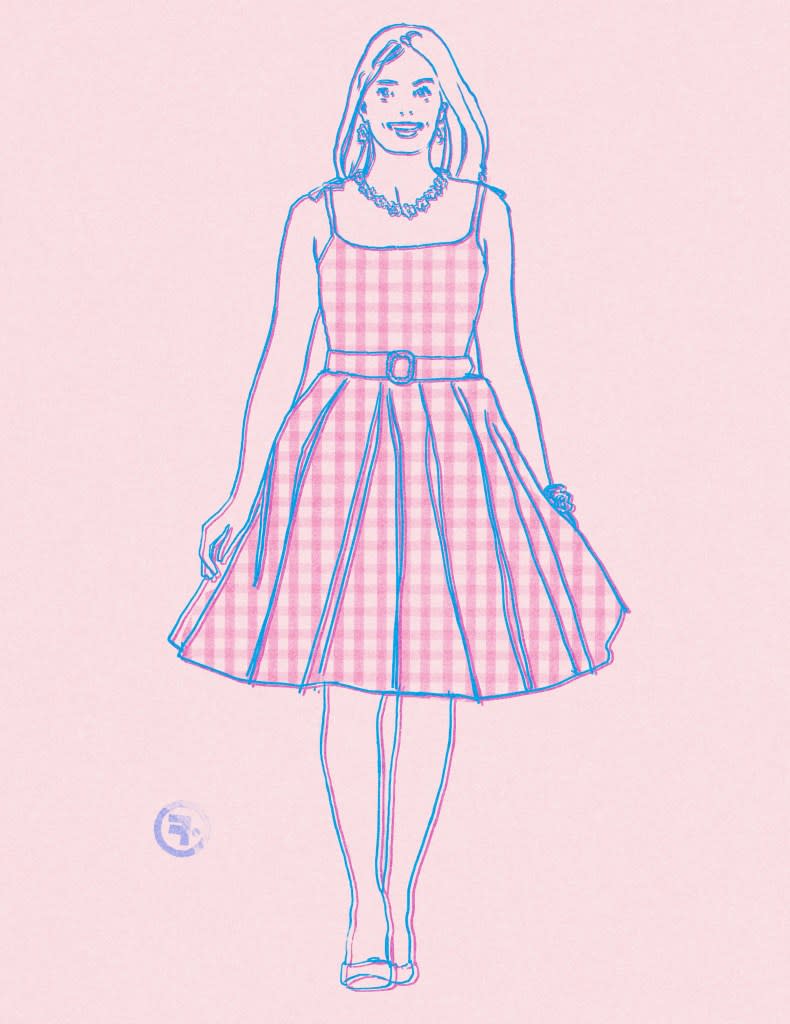
Barbie
Despite the five-decade timespan of the film, Oppenheimer’s distinctive suiting silhouette never wavers. “Because of his physique, he lost weight easily, so everything looked a little voluminous on him, which created a style by happenstance,” says Mirojnick, noting that gray flannel was his go-to outside of Los Alamos, with a mix of texture-rich tweeds, worsteds and cavalry twills in New Mexico, all anchored by blue shirting.
Oscar-winning costume designer Janty Yates teamed with military history expert David Crossman for Napoleon, set in the early 18th century. “Joaquin [Phoenix] is vegan, so nothing could be made in leather or wool,” says Yates. “His five styles of hats were made of tree bark fabric from Africa by our milliner in Rome. We used moleskin for the jackets, waistcoats and britches. The boots were vegan leather.” Crossman adds that Phoenix kept some of the hats that were “made to dimensions found in the Mus.e de l’Arm.e in Paris,” as well as his green Chasseur colonel’s uniform. Crossman crafted nearly 4,000 military uniforms for Prussians, Russians, Austrians, British, Cossacks, Egyptians and a 20-year span of French army uniforms using antique originals as models and produced in mass by Hero Collection in Poland. “An extraordinary amount of work went into copying Jacques-Louis David’s painting “The Coronation of Napoleon” as completely as we possibly could,” says Yates. “The trains were extremely long and heavy, all hand-embroidered in gold bullion with detail verbatim.”
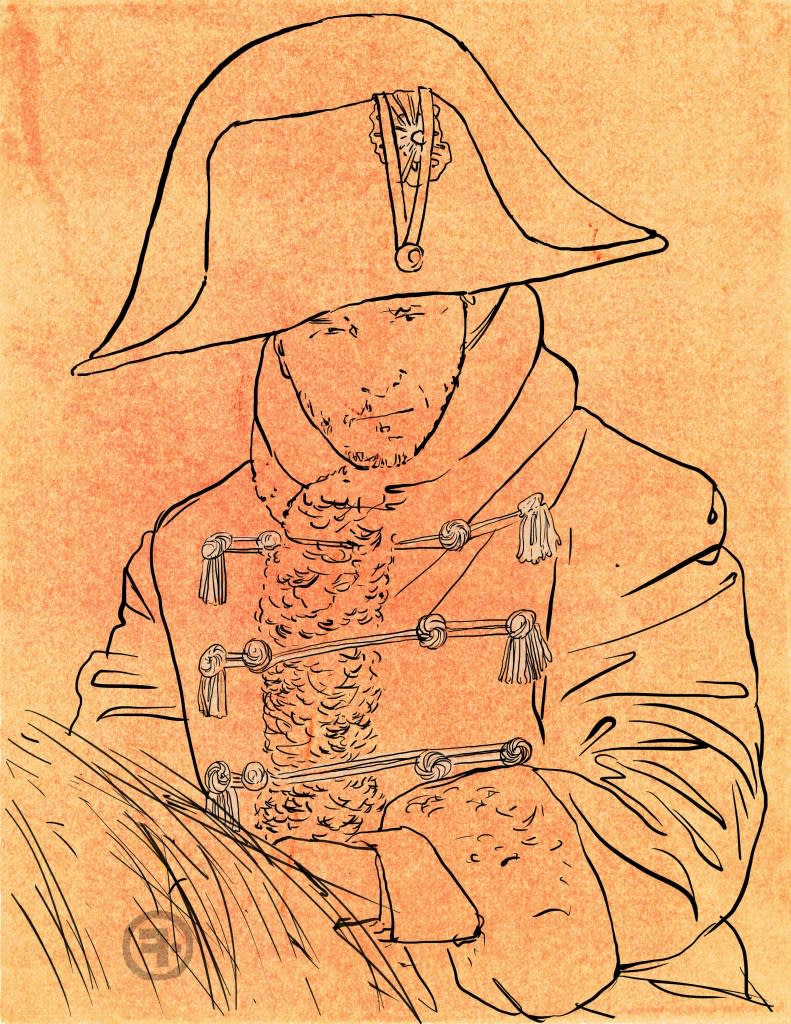
Napoleon
For Killers of the Flower Moon, set in 1920s Oklahoma, costume designer Jacqueline West brought on Osage wardrobe consultant Julie O’Keefe and collaborated with Pendleton Woolen Mills to reproduce 500 blankets. “Pendleton had archives of the actual blankets and color palettes sold to the Osage in the ‘20s at trading posts in Pawhuska and Fairfax (Oklahoma),” says West. “They even recreated the original labels. Julie calls them “the mink coats of the Osage,” as they were very expensive in their day. She knew all the nuances you can’t find in research, of how the blanket is worn in different situations—whether you fold the fringe in or out, how you hold it, when to wear it as a shawl. That subtlety meant a lot to Lily (Gladstone, as Mollie Burkhart).”
In the wedding scene, the women wear elaborate Regency-style military coats and top hats (a tradition originating as gifts from President Thomas Jefferson’s generals to tribal council members in the 1800s, according to West) customized with silk ribbon appliqu., dyed feathers and traditional silver pins—reconstituted peace-treaty medals also worn at the neckline to symbolize marital status. West handcrafted twisted chokers out of Czechoslovakian glass beads. Native American artisan William “Kugee” Supernaw of Tulsa created the silver jewelry and pins, and 400 pairs of Osage moccasins were handcrafted. “Altogether, we made about 4,000 costumes,” says West.
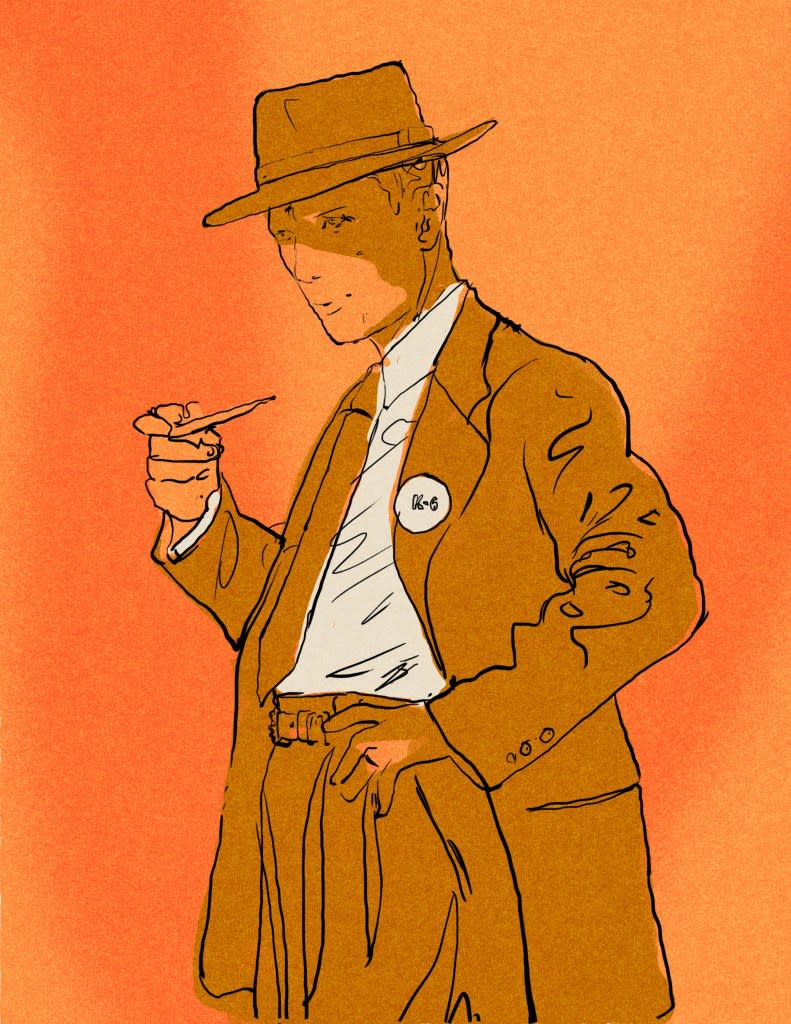
Oppenheimer
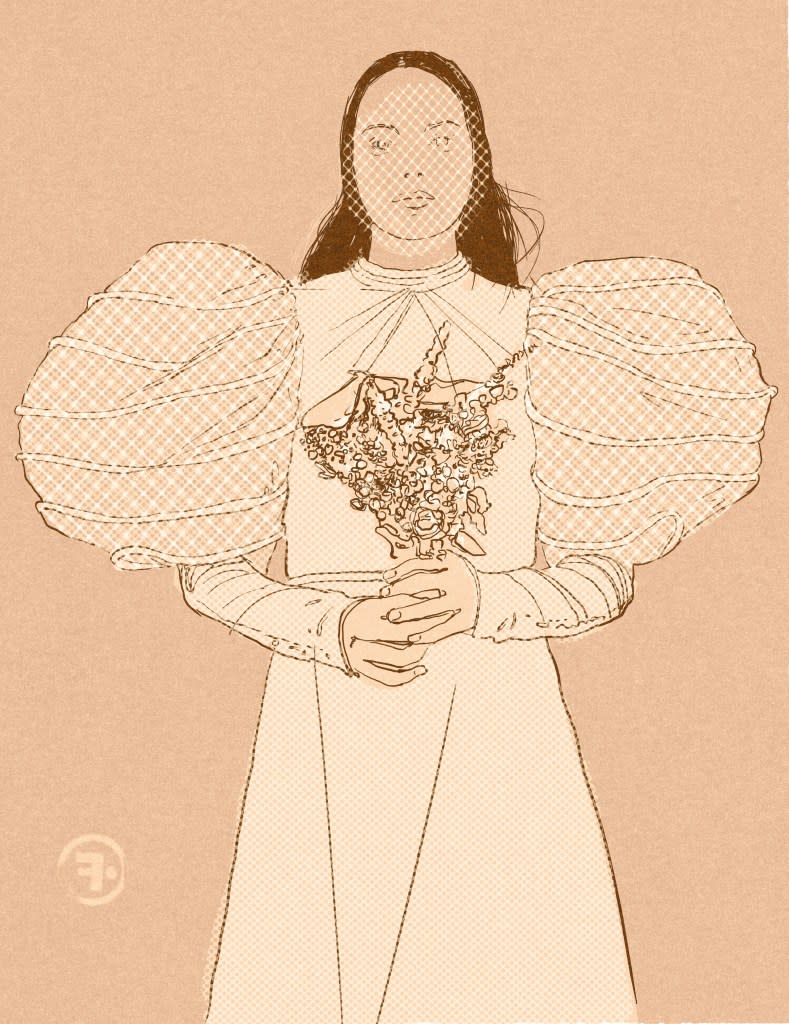
Poor Things
The post Dressing The Part appeared first on TheWrap.


